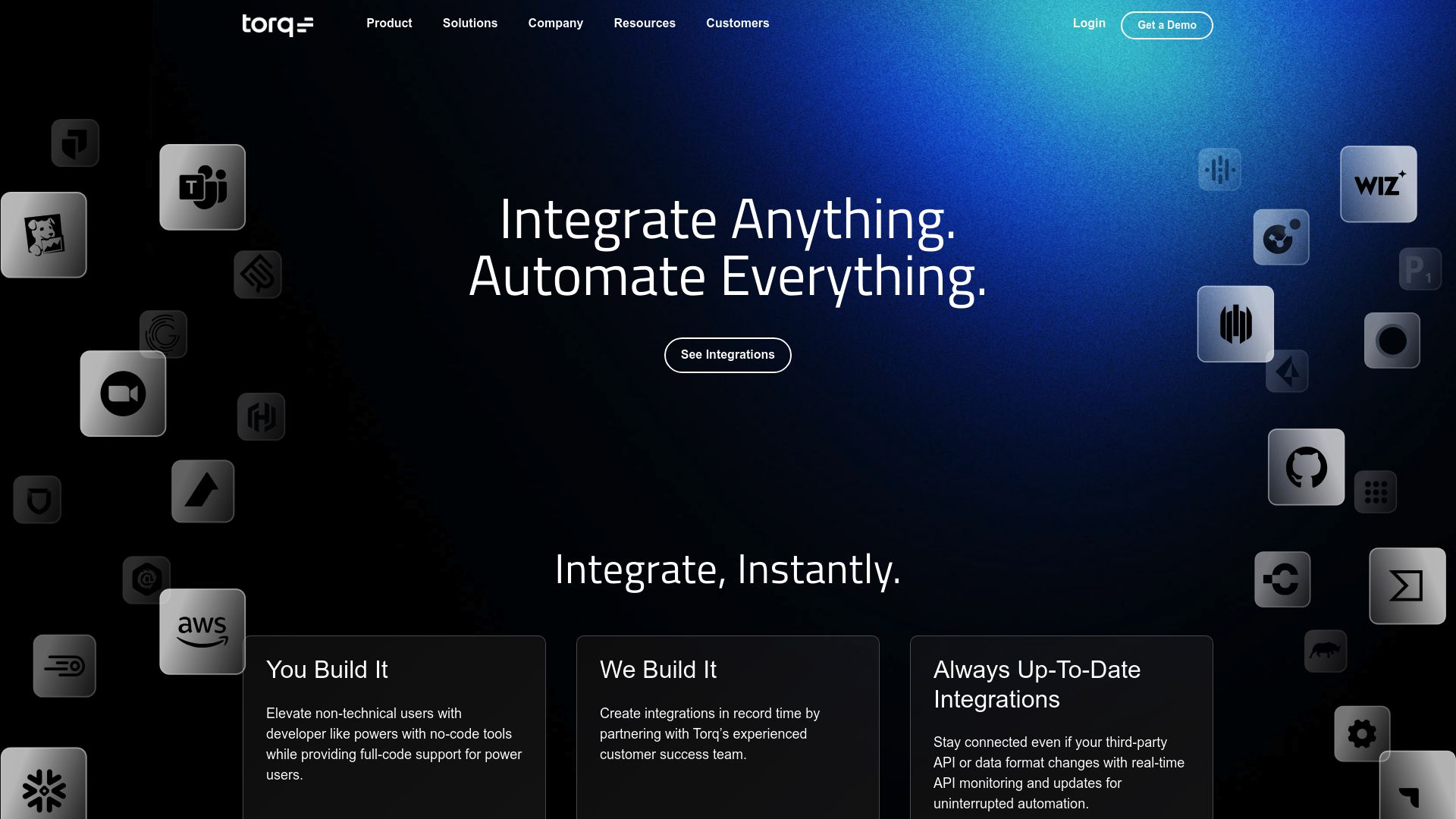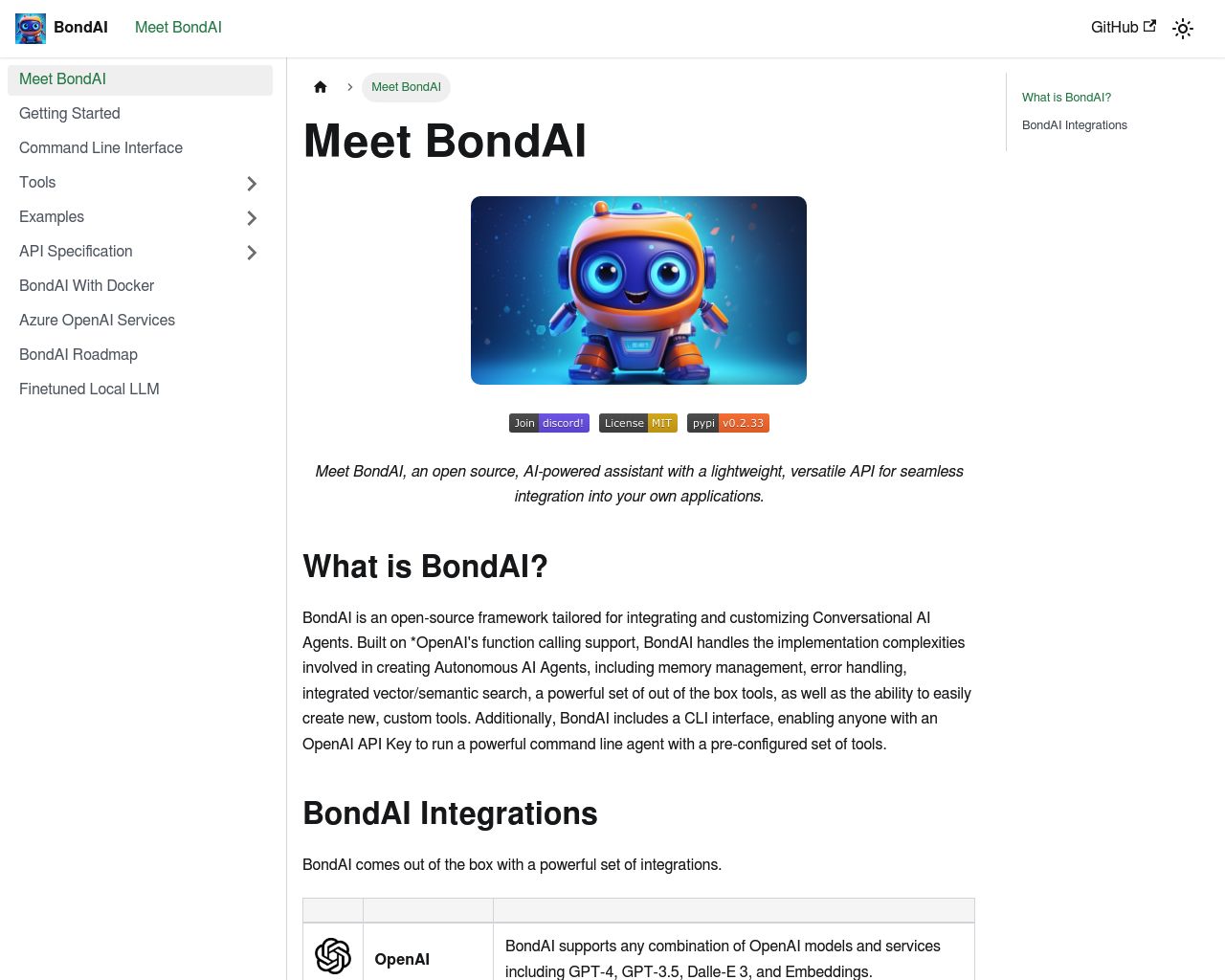Torq Hyperautomation vs. BondAI: Security and AI Features Compared
AI-driven automation revolutionizes software development and cybersecurity. Torq Hyperautomation vs. BondAI lead this transformation with distinct approaches. Torq specializes in enterprise-grade security automation, while BondAI offers an open-source framework for AI agent development. This comparison examines their features, strengths, and limitations to help developers, IT managers, and business leaders choose the right tool. We’ll explore how these platforms tackle complex workflows, integrate with existing systems, and push AI capabilities forward. Ultimately, we’ll reveal why SmythOS emerges as the superior alternative, combining the best of both worlds for unparalleled AI-driven automation.
Torq Hyperautomation Overview
Torq Hyperautomation delivers an enterprise-grade security automation platform designed to streamline and enhance cybersecurity operations. The software empowers security teams to create, deploy, and manage complex workflows without extensive coding knowledge.


Torq’s platform excels in orchestrating security processes across an organization’s entire tech stack. Its visual workflow designer allows users to build intricate automation sequences, connecting various security tools and data sources. This approach significantly reduces manual tasks, enabling security professionals to focus on strategic initiatives.
Torq’s platform excels in orchestrating security processes across an organization’s entire tech stack… significantly reduces manual tasks, enabling security professionals to focus on strategic initiatives.
Key features include customizable workflows, extensive third-party integrations, and robust case management capabilities. Torq supports various trigger mechanisms, from API calls to scheduled events, ensuring flexibility in workflow initiation. The platform’s use of variables and persistent data elements enhances context retention throughout execution cycles.
While Torq Hyperautomation shines in security automation, it lacks certain AI-centric features found in some competitors. The platform doesn’t offer AI agents or autonomous agent capabilities, focusing instead on predefined workflow automation. This limitation may impact users seeking advanced AI-driven decision-making in their security processes.
Torq’s strength lies in its ability to integrate seamlessly with existing security infrastructure. The platform supports a wide array of API-based integrations and includes features for Robotic Process Automation (RPA). This versatility allows organizations to leverage their current investments while enhancing overall security posture.
In the competitive landscape, Torq Hyperautomation positions itself as a specialized solution for security-focused enterprises. Its emphasis on no-code automation and extensive integration capabilities sets it apart from general-purpose AI platforms. However, organizations requiring deep AI capabilities or multi-agent collaborations may find the platform’s offerings somewhat limited in these areas.
BondAI Overview
BondAI empowers developers to create and manage AI agent systems with its open-source framework. The platform simplifies complex aspects of autonomous AI agent development, including memory management, error handling, and semantic search capabilities.


BondAI supports advanced AI architectures like ReAct Agents and ConversationalAgents, enabling both individual interactions and multi-agent systems. This versatility allows developers to tackle complex tasks that surpass single-agent model capabilities. The framework seamlessly integrates with popular services such as OpenAI models, Microsoft Azure, Google Search, and LangChain, expanding its utility across various applications.
BondAI supports advanced AI architectures like ReAct Agents and ConversationalAgents, enabling both individual interactions and multi-agent systems.
A standout feature of BondAI is its robust memory management system, inspired by the MemGPT paper. This tiered approach efficiently handles extensive contexts and complex conversations, using core memory for immediate tasks, conversation memory for dialogue history, and archival memory for long-term data storage. This structure enhances the problem-solving capabilities of AI agents by efficiently managing and retrieving information.
BondAI offers flexibility in deployment, supporting Command Line Interface (CLI), Docker containers, and direct integration into codebases. This versatility allows users to quickly start with pre-configured tools or build custom agents tailored to specific needs. However, BondAI lacks some features found in other platforms, such as a visual builder or no-code editor, which may limit its accessibility for non-technical users.
While BondAI excels in providing a comprehensive toolkit for advanced AI agent development, it may require a steeper learning curve compared to more user-friendly platforms. Its focus on developer-centric features and integration capabilities makes it an attractive option for technical teams and researchers pushing the boundaries of AI agent systems.
Feature Comparison
Torq Hyperautomation and BondAI offer distinct approaches to AI-driven automation, with notable differences in their core components and security features. Torq focuses on enterprise-grade security automation, while BondAI provides an open-source framework for developing AI agent systems.
Torq Hyperautomation excels in security-centric workflows, offering a visual builder and no-code options for creating complex security processes. It provides robust integrations with security tools and APIs, enabling automated responses to security incidents. However, Torq lacks AI agent capabilities and autonomous agent features, limiting its flexibility in handling advanced AI-driven tasks.
BondAI, on the other hand, specializes in AI agent development, supporting advanced architectures like ReAct Agents and ConversationalAgents. It offers a sophisticated memory management system inspired by the MemGPT paper, enhancing agents’ problem-solving capabilities. While BondAI provides powerful tools for AI researchers and developers, it may present a steeper learning curve for non-technical users due to its lack of a visual builder or no-code editor.
In terms of security, Torq Hyperautomation offers enterprise-level features such as data encryption, OAuth support, and IP control. BondAI, being open-source, relies more on user-implemented security measures. This difference highlights Torq’s focus on out-of-the-box security solutions versus BondAI’s emphasis on customizable AI agent development.
Feature Comparison Table
| Torq Hyperautomation | BondAI | SmythOS | |
|---|---|---|---|
| CORE FEATURES | |||
| Visual Builder | ✅ | ❌ | ✅ |
| No-Code Options | ✅ | ❌ | ✅ |
| Explainability & Transparency | ❌ | ✅ | ✅ |
| Problem-Solving Capabilities | ❌ | ✅ | ✅ |
| Human-AI Interaction | ❌ | ✅ | ✅ |
| Audit Logs for Analytics | ✅ | ❌ | ✅ |
| SECURITY | |||
| Constrained Alignment | ✅ | ❌ | ✅ |
| IP Control | ✅ | ❌ | ✅ |
| COMPONENTS | |||
| Huggingface AIs | ❌ | ✅ | ✅ |
| Zapier APIs | ❌ | ✅ | ✅ |
| All other APIs, RPA | ❌ | ✅ | ✅ |
| Logic | ❌ | ✅ | ✅ |
| Data Lakes | ✅ | ❌ | ✅ |
| DEPLOYMENT OPTIONS (EMBODIMENTS) | |||
| Deploy as API | ❌ | ✅ | ✅ |
| Staging Domains | ✅ | ❌ | ✅ |
| Production Domains | ❌ | ✅ | ✅ |
| API Authentication (OAuth + Key) | ❌ | ✅ | ✅ |
| Deploy as Scheduled Agent | ❌ | ❌ | ✅ |
| Scalability | ❌ | ✅ | ✅ |
| DATA LAKE SUPPORT | |||
| Hosted Vector Database | ✅ | ❌ | ✅ |
| Sitemap Crawler | ❌ | ❌ | ✅ |
| YouTube Transcript Crawler | ❌ | ❌ | ✅ |
| URL Crawler | ❌ | ✅ | ✅ |
| PDF Support | ❌ | ✅ | ✅ |
Best Alternative to Torq Hyperautomation and BondAI
SmythOS stands out as the superior alternative to Torq Hyperautomation and BondAI, offering a comprehensive AI agent development platform that combines power and accessibility. We’ve designed SmythOS to address the limitations of both Torq’s security-focused automation and BondAI’s open-source framework, providing a versatile solution for businesses of all sizes.
Our platform excels in ease of use, featuring an intuitive drag-and-drop interface that allows both technical and non-technical users to create sophisticated AI agents without extensive coding knowledge. This visual builder sets SmythOS apart from BondAI’s code-heavy approach, making AI development accessible to a broader audience while maintaining the flexibility needed for complex projects.
SmythOS boasts an unparalleled feature set that surpasses both Torq and BondAI. We offer robust security measures on par with Torq’s enterprise-grade solutions… while also providing the advanced AI capabilities found in BondAI
SmythOS boasts an unparalleled feature set that surpasses both Torq and BondAI. We offer robust security measures on par with Torq’s enterprise-grade solutions, including data encryption and OAuth support, while also providing the advanced AI capabilities found in BondAI, such as support for various AI models and sophisticated memory management. Our platform goes further by including features like multimodal interactions, problem-solving capabilities, and human-AI collaboration tools, enabling the creation of truly intelligent and versatile agents.
Where Torq Hyperautomation focuses primarily on security workflows and BondAI caters to AI researchers, SmythOS opens up unlimited use cases across industries. Our platform supports deployment options ranging from APIs and webhooks to scheduled agents and chatbots, allowing businesses to integrate AI seamlessly into their existing processes. With SmythOS, you can automate customer service, enhance data analysis, optimize operations, and even create innovative AI-driven products—all from a single, unified platform.
By choosing SmythOS, you’re not just selecting a tool; you’re embracing a future-proof solution that evolves with your needs. Our commitment to continuous improvement and our extensive integration ecosystem ensure that your AI agents will remain cutting-edge and effective, regardless of how your business grows or technology advances. Experience the power of truly accessible, enterprise-grade AI development with SmythOS—where innovation meets simplicity.
Conclusion
Torq Hyperautomation and BondAI each offer unique approaches to AI-driven automation, catering to different needs within the tech landscape. Torq excels in enterprise-grade security automation, providing a visual builder and extensive integrations for security-centric workflows. Its no-code options and robust security features make it attractive for organizations prioritizing cybersecurity automation. However, Torq’s lack of AI agent capabilities may limit its flexibility for advanced AI tasks.
BondAI, as an open-source framework, shines in AI agent development. It supports sophisticated architectures like ReAct Agents and offers an impressive memory management system. This makes BondAI ideal for developers and researchers pushing the boundaries of AI systems. Yet, its steeper learning curve and absence of a visual builder may deter non-technical users.
While both platforms have their strengths, SmythOS emerges as a superior alternative, combining the best of both worlds. We offer a user-friendly drag-and-drop interface similar to Torq’s visual builder, making AI development accessible to a broader audience. At the same time, our platform supports advanced AI capabilities and multi-agent collaboration, rivaling BondAI’s sophisticated features. SmythOS’s extensive integration ecosystem, versatile deployment options, and support for various AI models provide unparalleled flexibility and power.
For those looking to harness the full potential of AI in their workflows, SmythOS offers a compelling solution. Our platform not only addresses the limitations of both Torq and BondAI but also provides additional features like seamless deployment across multiple platforms and environments. Create a free SmythOS account today to experience the future of AI automation, with no time limit and a 30-day money-back guarantee. Discover how SmythOS can revolutionize your approach to AI integration and automation, making your workflows 99% faster and more efficient.
Last updated:
Disclaimer: The information presented in this article is for general informational purposes only and is provided as is. While we strive to keep the content up-to-date and accurate, we make no representations or warranties of any kind, express or implied, about the completeness, accuracy, reliability, suitability, or availability of the information contained in this article.
Any reliance you place on such information is strictly at your own risk. We reserve the right to make additions, deletions, or modifications to the contents of this article at any time without prior notice.
In no event will we be liable for any loss or damage including without limitation, indirect or consequential loss or damage, or any loss or damage whatsoever arising from loss of data, profits, or any other loss not specified herein arising out of, or in connection with, the use of this article.
Despite our best efforts, this article may contain oversights, errors, or omissions. If you notice any inaccuracies or have concerns about the content, please report them through our content feedback form. Your input helps us maintain the quality and reliability of our information.
